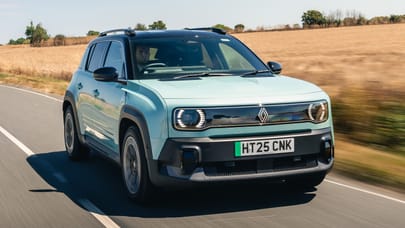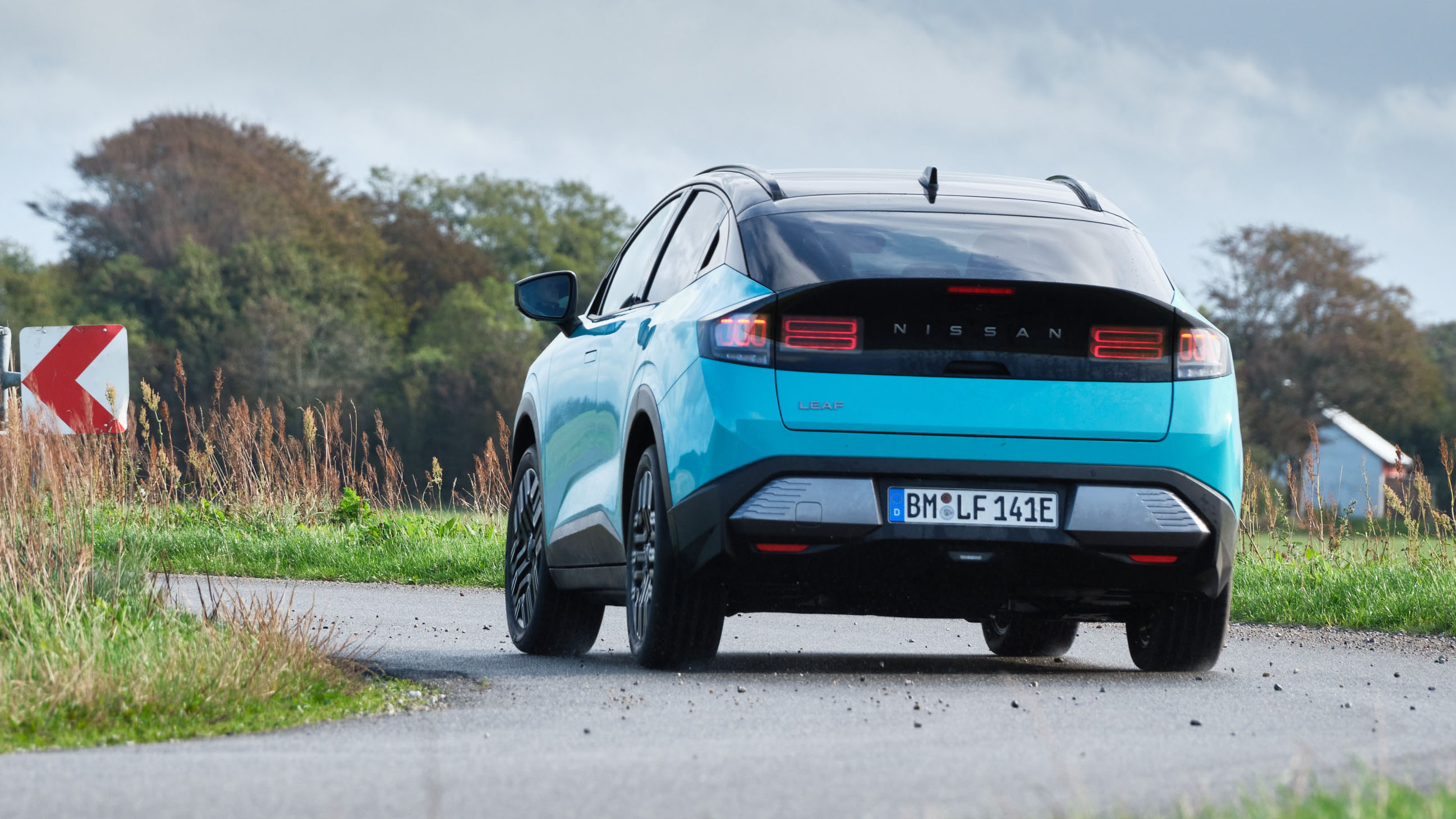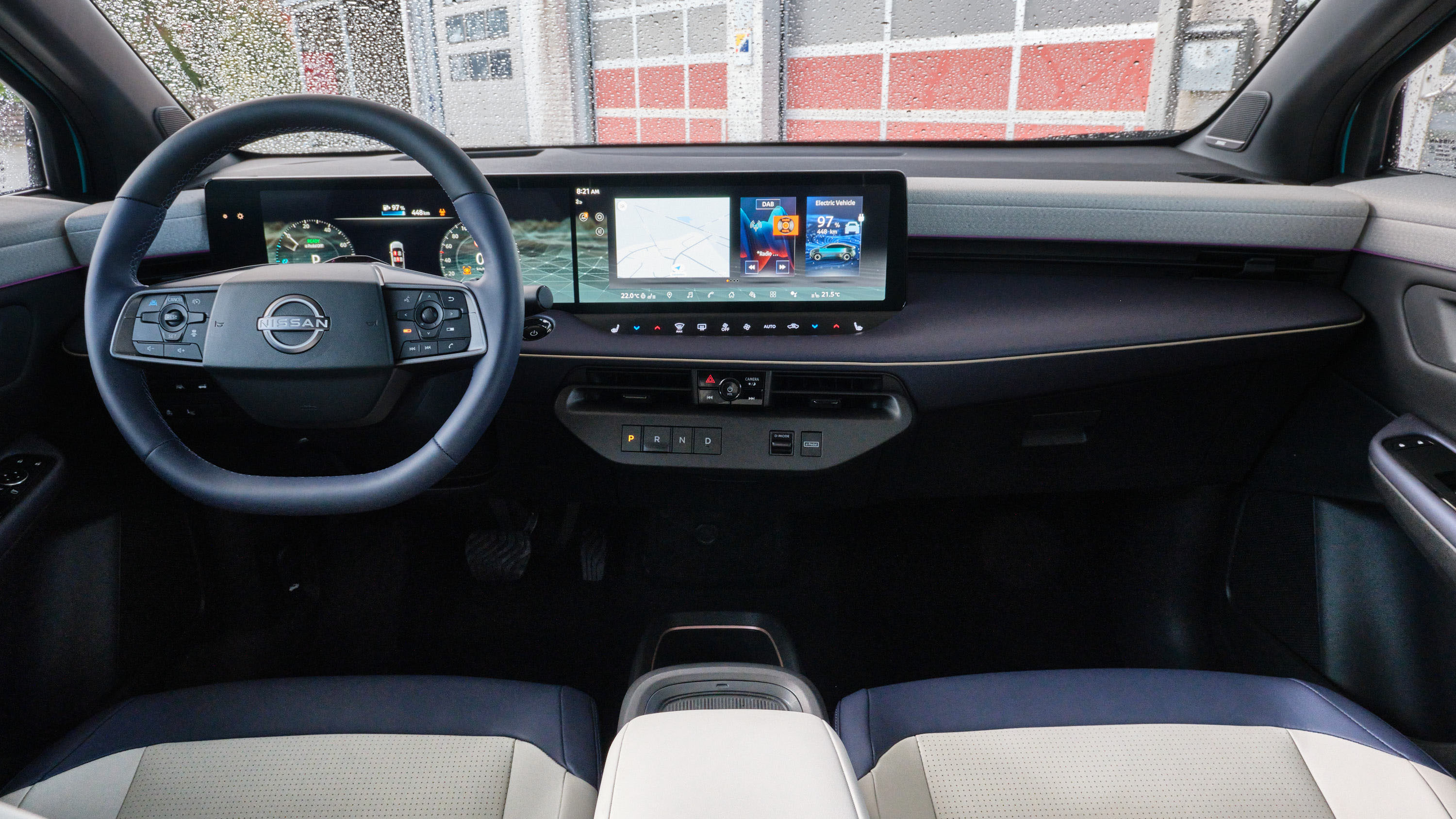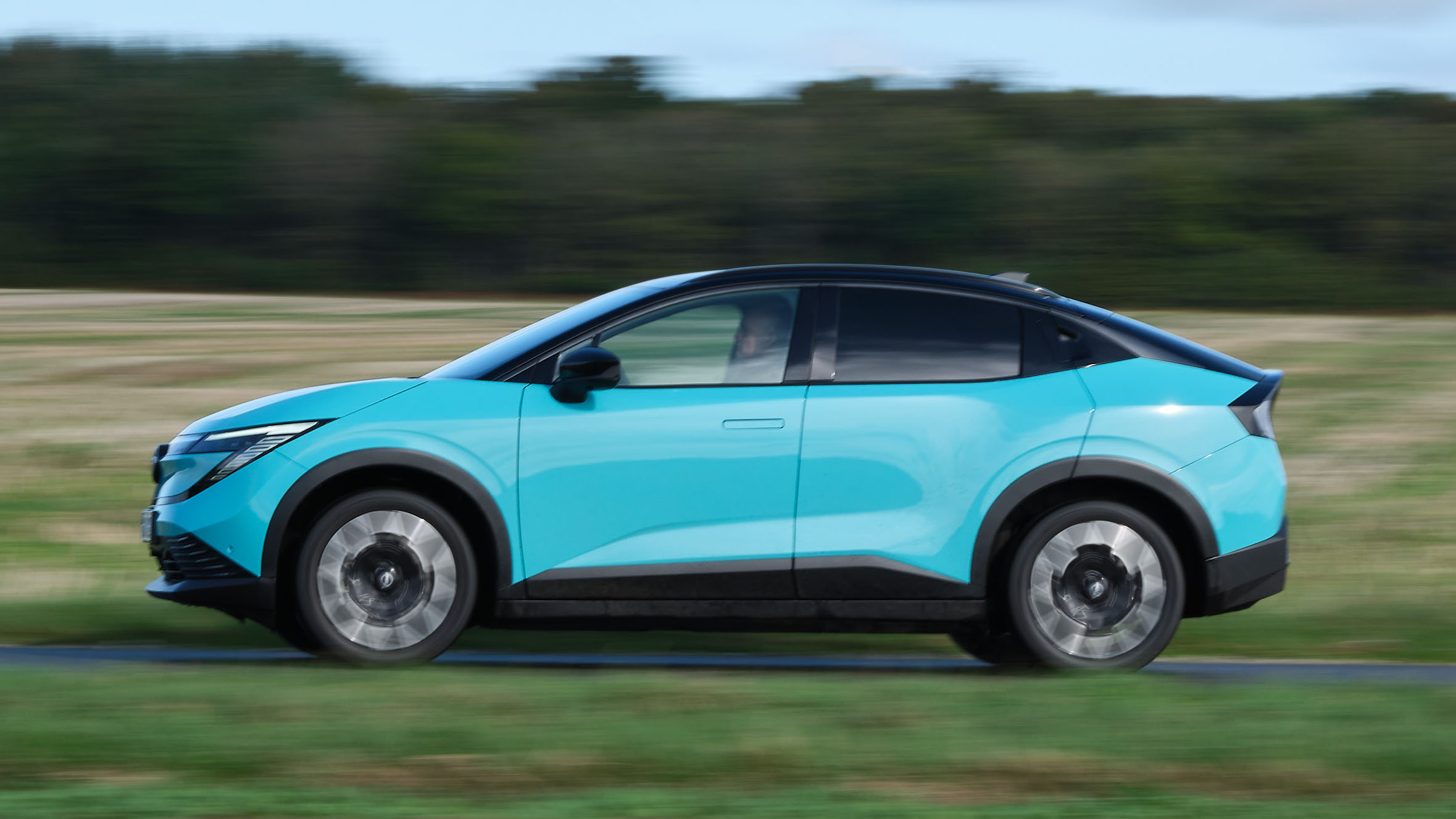
Interior
What is it like on the inside?
The upper two trims let you swerve all-black upholstery and brighten things up with a blue and light grey combo. That includes a band of cloth around the top of the doors and dash. Everything else is fine soft plastics, except, oddly the little panel that houses the forward/reverse switch, and drive mode selector. The late-'80s Bluebird wants that back please.
The seats don't give you much lateral support but otherwise the driving position is good. The phone charge pad is half-hidden under the armrest. Good for two reasons: it won't go flying if you take a corner with enthusiasm, and you won't be distracted by it. You have wireless phone mirroring anyway.
The top version has a Bose system, which sounds like Bose systems do – bass-forward, spacious if not terribly plausible, but fun. A pair of speakers in the driver's headrest whispers sweet navigation in your ear without bothering everyone else.
Back seat room is quite good with the usual foot-space proviso – front seats need to be raised a bit. Nissan has done its usual thing with bottle holders in the doors and so on. The 437-litre boot has dividers and hooks.
How well does the interface work?
Excellently. You can control a huge amount from the steering wheel. A pair of buttons gives choice of access to all car settings in the driver's binnacle, and a second button switches the same navigation pad – four-way and an OK button – to move around the touchscreen. So you seldom need to reach out and touch it. As you're using haptics, you're keeping eyes off the road far less than a touchscreen-only system.
A Google-based nav and comms setup means an EV route planner to figure out where you might need to stop for a charge and how long it'll take, with automatic battery preconditioning as you approach the stop. We didn't have the car for long enough to use it, but it's in Renaults and one of the very best of its kind.
Featured

Trending this week
- Car Review
BMW iX3






